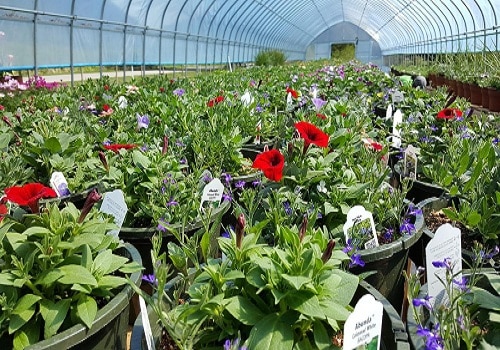Before selecting and buying plants, be aware of the following things:
Make sure you know the plant’s requirements in terms of light, water, and soil type. Buying houseplants that don’t thrive in your conditions is setting yourself up for failure.
Don’t impulse buy! It’s tempting to want to take home every pretty plant you see but resist the urge. Think about where you’ll put it, whether it will fit in with your other plants, and whether you’re actually prepared to care for it properly.
Get your timing right. If you’re buying seasonal plants, make sure it’s actually the right time of year for them. Buying a summer plant in winter, for example, is a recipe for disaster.
Do your research. Before buying houseplants, take the time to read up on them and make sure you know how to care for them.
Be prepared. Have the suitable pots, soil, and tools on hand before you bring your plants home. This will make the transition smoother and reduce the stress on the plant. Following these tips will help you select and buy plants that are more likely to thrive, saving you money and heartache in the long run.
Tips for when buying houseplants

1. Availability of space
If you are considering buying a plant like a rubber tree, ficus, or monstera, think about the available space in your home. You may be purchasing a small specimen, but unless they are a dwarf or miniature variety, these plants will eventually grow out of their pots, and in the right conditions, reach right up to your ceiling.
They will also require a yearly pot change, moving up a container size, and a renewal of soil. Are you willing to share floor space with these plants? Are you willing to put in the effort?
2. Light and other environmental conditions
It is better to choose plants that will really thrive in the environment you provide, rather than choosing plants purely based on their aesthetic appeal. This way, you avoid the guilt of having to discard plants when they suffer from improper environmental conditions.
For example, flowering and fruiting plants require high-light conditions and will not grow well in low-light environments. Similarly, succulents will suffer in too humid an environment, and evergreen perennials like philodendrons and homalomenas will wilt and burn in harsh light.
Therefore, it is important to choose the plant that is right for the environment you will provide, taking into consideration all the information in this book.
3. Condition of plants
When you are buying new plants, always take a close look at the leaves and stems for any signs of pests or disease. If you bring home a plant that is infested with pests, the infestation can quickly spread to your other plants.
If you notice that your new plant has bugs or disease after you bring it home, quarantine it for a few days and take the appropriate measures.
4. Root health
If you buy plants at a garden center, ask the nursery people to tip the plant out of its pot to check the roots. Healthy roots are usually white, firm, and fleshy, with no foul smell. Rooting or diseased roots are dark-brown, mushy, and exude a putrid odor.
5. Dark green plants do better in low light
If you don’t have too much lighting in your house, choose a darker leaf variety rather than one with variegation or patterns. Any plant that bears flowers or fruits or has yellow, cream, or light-green foliage requires more light than a plant with dark-green leaves.
However, deep purple or black-leafed plants will do well in shady locations.
6. Choose plants with thick, fleshy green leaves
The best plants for low light conditions are those with firm, fleshy green leaves. These plants are better able to hold on to water, which means they will need less water and are more likely to survive in low-light conditions than plants with thin, delicate, papery leaves.
7. Plant toxicity
Most houseplants are toxic to both humans and pets. The toxicity level varies for each plant. If you have children or pets and cannot guarantee that they will not eat them, keep your plants out of reach. You can handle most plants without any gloves but do wear a pair if it makes you comfortable.
What should I look for when buying a new plant?
When choosing a new plant, it is important to consider the size of the pot, the type of plant, the light and water requirements, and the climate. It is also important to know whether the plant is toxic to pets or children.
What you will check before purchasing any plant from a nursery?
Some things to consider before purchasing a plant from a nursery include:
1. The type of plant you are looking for -The size of the plant
2. The climate the plant is best suited for -How much sun or shade the plant needs
3. The soil type the plant prefers
4. Whether the plant is native to your area
How do I choose a good nursery plant?
When choosing a nursery plant, it is important to consider the plant’s light, water, and soil needs. It is also important to choose a plant that is appropriate for the climate in which it will be grown.

